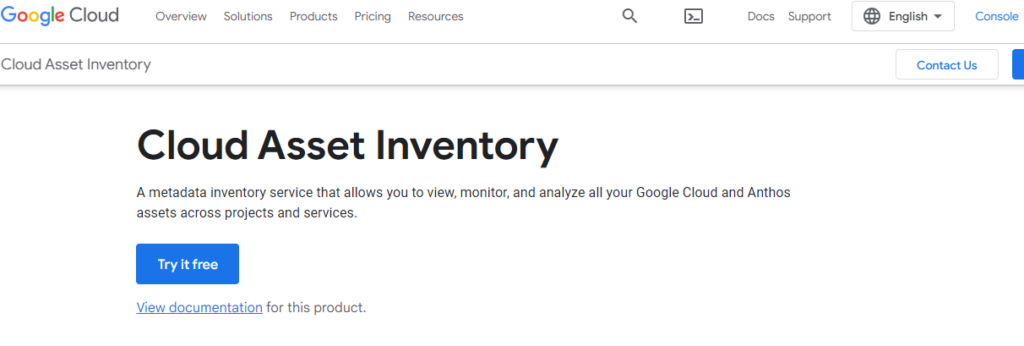In the dynamic landscape of modern business, the cloud has emerged as a transformative force, offering unparalleled opportunities for innovation, efficiency, and growth. Crafting and executing a robust cloud strategy is not just a choice but a necessity for businesses aspiring to stay competitive and agile. This detailed guide provides actionable insights to help you navigate the intricacies of cloud strategy and unlock success for your organization.
Understanding the Essence of Cloud Strategy
Why a Cloud Strategy Matters?
A cloud strategy is a meticulously crafted plan that delineates the best practices, tools, and services to employ when implementing a cloud solution. It serves as a roadmap for businesses, guiding them through the intricacies of cloud adoption, implementation, and ongoing operations. This strategy applies to various cloud deployment models, including public, private, hybrid, and multi-cloud.
A cloud strategy serves as the guiding framework that outlines how an organization will utilize cloud services to achieve its goals. It involves a holistic approach to integrating cloud resources into the overall business strategy, considering factors like infrastructure, applications, data management, and security.
Align Cloud Strategy with Business Objectives
Before diving into the technicalities, understand your business needs and align your cloud strategy with overarching organizational objectives. Technology strategy consulting can help identify areas where the cloud can bring the most value, whether it’s enhancing operational efficiency, fostering innovation, or achieving cost savings.
1. Assessing Your Business Landscape: Setting the Foundation
Before diving into the cloud, take the time to understand your organization’s unique needs and challenges. Engage stakeholders, conduct interviews, and analyze existing workflows. Identify pain points, potential areas for improvement, and long-term business goals.
2. Defining Clear Objectives: The Blueprint for Success
Define Specific, Measurable, Achievable, Relevant, and Time-bound (SMART) objectives for your cloud strategy. Whether it’s reducing operational costs, improving collaboration, or enhancing data security, having clear and specific goals will guide your decision-making throughout the process.
Get exclusive access to all things tech-savvy, and be the first to receive
the latest updates directly in your inbox.
3. Choosing the Right Cloud Model: Tailoring to Your Needs
Assess the pros and cons of public, private, hybrid, or multi-cloud models based on your organization’s requirements. Consider factors such as data sensitivity, compliance, and scalability. Choose a model that aligns seamlessly with your business objectives.
4. Building Scalability into Your Infrastructure: Future-Proofing Your Operations
Develop a strategy for scaling your infrastructure based on demand. Leverage auto-scaling features provided by cloud service providers. This ensures that your organization can adapt to changing workloads efficiently while optimizing costs.
5. Empowering Collaboration with Cloud Tools: Boosting Productivity
Implement cloud-based collaboration tools such as Microsoft 365, Google Workspace, or Slack to enhance communication and collaboration among your teams. Train your staff to utilize these tools effectively for streamlined workflows.
Why Do You Need a Cloud Strategy?

As cloud adoption surges, organizations are increasingly recognizing the need for a comprehensive cloud strategy. It has become a critical component of any modern IT strategy. The rise of artificial intelligence (AI), data science, and machine learning further accentuates the importance of a well-defined cloud strategy in modernizing IT infrastructure. Read Microsoft Exam AZ-900 Dumps
A cloud-native strategy offers numerous benefits, ensuring successful cloud adoption and operation at scale. It acts as a comprehensive plan that saves costs, meets critical business milestones, and achieves digital transformation objectives in diverse cloud setups.
Organizations that neglect best practices, tools, and services in building a cloud-native strategy risk escalating costs and adversely impacting customer experiences.
Benefits of a Cloud Strategy

Become Agile and Save Costs
Embracing cloud solutions empowers organizations with the capability for dynamic resource scaling, providing a seamless alignment with the ever-evolving demands of workloads and customer expectations. As businesses transition to the cloud, a notable advantage emerges in the form of reduced IT budgets. This financial efficiency allows internal resources to redirect their focus towards high-value activities, cultivating an environment conducive to enhanced employee productivity. Moreover, the positive impact extends to customer satisfaction as the streamlined and scalable nature of cloud services facilitates quicker responses to customer needs and demands.

Additionally, the cost savings achieved through cloud adoption contribute to talent retention, providing organizations with the means to invest in employee development and welfare. In essence, cloud adoption represents a transformative journey that not only optimizes operational efficiency but also catalyzes a positive ripple effect, elevating overall organizational performance and resilience.
Align Vision and Objectives
A well-crafted cloud strategy serves as a linchpin that not only supports but intricately aligns with the overarching goals, objectives, and cultural ethos of an organization. It functions as a strategic guide, providing clarity and direction for navigating the complexities of cloud adoption in a manner that resonates with the unique identity of the business. Beyond its technical aspects, a cloud strategy becomes a visionary tool, aiding in the visualization of how various cloud environments can actively contribute to shaping the desired future state of the organization.
Select the Right Cloud Platform(s)

The critical decision of selecting the appropriate cloud platform is underscored by its potential impact on various facets of an organization’s operations. In this context, a well-defined cloud strategy emerges as an indispensable companion, offering strategic guidance that extends beyond platform selection.

By aligning the selection process with overarching business objectives, the strategy ensures that the chosen cloud platform not only fulfills immediate requirements but also strategically positions the organization for sustained growth, adaptability, and success in the ever-evolving digital landscape.
Here are some prominent cloud platforms to consider when implementing your cloud strategy:
- Amazon Web Services (AWS)
- Microsoft Azure
- Google Cloud Platform (GCP)
- IBM Cloud
However, to unlock the full potential of platforms like Azure, it’s crucial for teams to take the Microsoft Exam. These exams offer in-depth knowledge and certifications, empowering teams to use the cloud solution effectively and achieve organizational goals.
Identify Your Cloud Implementation Plan
A roadmap for a cloud strategy delineates essential steps and activities crucial for the successful implementation of a cloud solution. This strategic plan not only takes into account the current operational landscape but also harmonizes seamlessly with the overarching cloud adoption strategy. Moreover, it meticulously charts a course for cloud implementation, aligning every step with predefined objectives to ensure a purposeful and effective transition to the cloud environment.
Here are key steps to guide you through the process:
- Define Objectives and Requirements
- Conduct a Cloud Readiness Assessment
- Select the Right Cloud Model
- Choose a Cloud Service Provider
- Develop a Detailed Migration Plan
- Data Migration and Transfer
- Implement Cloud Security Measures
- Optimize and Scale Resources
- Establish Monitoring and Management Protocols
- Train and Educate Teams
- Implement Backup and Disaster Recovery
- Monitor, Evaluate, and Optimize
- Document and Review
- Ensure Compliance
- Seek Feedback and Continuous Improvement
How to Get Started with a Cloud Strategy Roadmap?
Determine Your Company’s Core Needs
Gain a comprehensive understanding of your organization’s core values, purpose, intended use of cloud services, key metrics, and customer expectations. This foundational insight forms the bedrock for tailoring cloud services to meticulously align with specific business requirements.
Assess the Tools at Your Disposal

Conduct a thorough evaluation of your current cloud services by leveraging inventory tools that provide a comprehensive overview of existing resources. Subsequently, embark on a diligent comparison between your current services and potential alternatives. Consider crucial factors such as functionalities, costs, and compatibility to make informed decisions about the suitability of each option.
Here are some commonly used cloud services inventory tools:
- AWS Config
- Azure Resource Manager (ARM)
- Google Cloud Asset Inventory
- CloudCheckr
Define a Roadmap with Specific Goals
Begin the journey of cloud adoption with a clear and precise definition of organizational goals. Establish a comprehensive understanding of what the business aims to achieve through cloud integration, whether it’s enhanced scalability, cost efficiency, or improved agility. With these goals in focus, craft a detailed roadmap that systematically outlines the steps required to attain them. This roadmap should be a strategic guide, taking into account the current state of operations and aligning seamlessly with the overarching cloud adoption strategy. By harmonizing these elements, organizations can ensure a purposeful and effective transition to the cloud, ensuring that each step contributes meaningfully to the realization of their predefined goals.
Put Together a Proposal
Create an exhaustive proposal that compares existing services with the proposed modifications. Emphasize the rationale behind the proposed changes, articulate their potential impact on operations, and identify the stakeholders accountable for each service. This comprehensive document serves as a detailed guide, offering insights into the necessity for change, the anticipated outcomes on organizational operations, and the key individuals responsible for the successful implementation of each service modification.
Execute Your Business Strategy and Think Ahead
Execute the suggested modifications and consistently evaluate the ever-changing cloud environment. Remain adaptable and receptive to alterations, foreseeing upcoming technological investments and business results.
Advantages of Cloud Strategy
Optimize the Advantages of Cloud Strategy While nearly every organization leverages cloud computing, a significant number do so without a well-documented strategy outlining the organization’s activities in the cloud and the underlying reasons. In the absence of such clarity, the full potential of cloud operations may not be realized. The Gartner roadmap empowers Chief Information Officers (CIOs) to craft a succinct cloud strategy document by guiding them through essential steps:
- Align objectives regarding the cloud.
- Formulate a comprehensive cloud action plan.
- Ready the organization for execution.
- Establish governance structures and mitigate risks.
- Fine-tune and scale for optimal performance.
FAQs
How can a well-defined cloud strategy benefit our organization?
A well-defined cloud strategy can lead to improved scalability, cost-effectiveness, agility, and overall operational efficiency. It aligns technology initiatives with business objectives, fostering innovation and competitive advantage.
What are the key components of a robust cloud strategy?
Essential components include defining objectives, selecting the right cloud services, developing an implementation plan, ensuring security and compliance, establishing governance frameworks, and continually optimizing cloud operations.
How does cloud strategy align with overall business objectives?
A well-crafted cloud strategy aligns with business goals by enhancing flexibility, supporting innovation, and providing a scalable and cost-effective infrastructure. It enables organizations to respond quickly to market changes and customer demands.
How can organizations ensure security in their cloud strategy?
Security in a cloud strategy involves implementing robust access controls, encryption, regular audits, and compliance measures. Organizations should also choose reputable cloud service providers with strong security practices.
What challenges might organizations face when implementing a cloud strategy?
Challenges may include data migration issues, integration complexities, security concerns, and resistance to change. A carefully crafted strategy addresses these challenges by providing a roadmap for successful cloud adoption.
Conclusion
A cloud strategy is not merely a technical roadmap; it is a strategic enabler for organizations seeking to thrive in the digital era. By following a comprehensive cloud strategy roadmap, businesses can seamlessly adopt, implement, and optimize cloud solutions, positioning themselves at the forefront of innovation and efficiency. In essence, a well-crafted cloud strategy is the key to unlocking the benefits of cloud computing, ensuring organizations stay agile, cost-effective, and aligned with their overarching business objectives. Embark on your cloud journey today, and pave the way for a future enriched with limitless possibilities.



